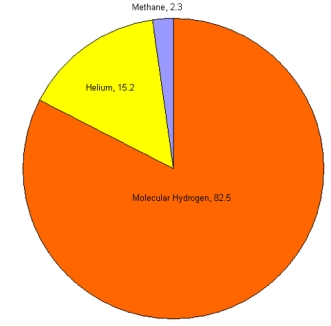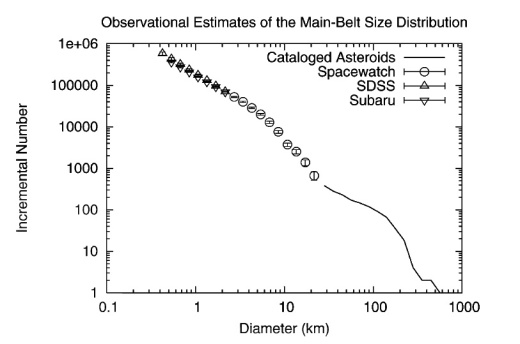Do you think a meteorite the size of a TV could have as much energy as 13 tons of TNT? Every day a meteorite comes down and strikes the Earth without us even knowing it. A meteoroid is a small body moving in the solar system that would become a meteor if it entered the earth’s atmosphere. A meteorite is a meteoroid that survives through the Earth’s atmosphere and makes an impact on Earth’s surface. Meteorites can either cause little to no damage or massive damage.
A meteorite the size of a TV can cause as much damage as 13 tons of TNT. Kinetic energy is energy that a body possesses by virtue of being in motion. The equation for kinetic energy is:
It took several different steps to figure out the mass of the meteor using the density and the volume. With certain calculations my mentor and I have come up with a kinetic energy of 56 gigajoules for a meteorite the size of a TV, the density of rock and a velocity typical of meteorites. Once the meteorite makes an impact into the ground the kinetic energy that is within the meteorite gets converted into different types of energy. The ground expands around the meteorite creating a crater; the air heats up as a result of the explosion; sound waves are created and travel through the air. It is surprising to hear that a TV the size of a meteorite can create so much damage.
The Sudbury Basin in Ontario, Canada is the second largest impact crater known on Earth. The Sudbury Basin is also known as the Sudbury Structure or the Sudbury Nickel Irruptive. The basin is located on the Canadian Shield in the city of Greater Sudbury, Ontario. The impact was 10-15 kilometers (6.2-9.3 miles long) in diameter. This meteorite occurred 1.849 billion years ago. The explosion resulting from impact was quite big. The debris scattered over 1,600,000 kilometers squared (620,000 square miles) and traveled over 800 kilometers (500 miles) away. The considerable erosion have occurred since the Sudbury event, an estimated 6 kilometer (3.7 miles) in the North Range, it is difficult constrain the actual size of the Sudbury crater, whether in diameter of original transit cavity, or final rim diameter. The rock fragments ejected by the impact were found as far as Minnesota. In 1891, the Canadian Copper Company started mining copper from the Basin. Soon afterward, they discover that the crater also contained nickel. The nickel was found in the crater that crashed onto the Earth. Today the International Nickel Company operates out of the Basin and mines 10% of the world’s nickel. At that time, there were no humans that were hurt considering there were no humans back then.
The last meteorite crash that occurred was in South Africa located at the Vredefort Dome. It is bigger than the one in Ontario, Canada which makes it the largest in the world. There are about 130 crater structure impacts still visible in history. This one is the largest clearly seen impact site in the world along with it being the oldest. The impact was 186 miles wide and it was a 6 mile wide meteorite. There were hills in the dome that are 70 kilometers long in diameter. The impact was 2.023 billion years old. The center of the dome was originally thought up by a volcanic explosion but later in the 1990’s it was revealed to be a huge bolide impact. A bolide impact meteoroid is a sand to boulder sized particle of debris in the Solar System. The crater is now in the center of 3 towns. The meteorite strike resembles a dome, which was created when the walls of the crater slumped.
Northern Desert (Arizona) meteorite was the first impact crater to be recognized on Earth. According to scientists research they have found to believe that it faster than before.The meteorite was 160 feet long. The crater left was a mile wide and 570 feet deep. The name of the crater was meteor crater. It is also known as the Barringer crater due to the family who owns the spot where the crater is located. Scientists believe that the crater was traveling 28,600 miles per hour. The explosion was about 150 more times powerful than the Hiroshima atomic bomb. The area surrounding the crater is rich in nickel and iron.
Vredefort Crater in Africa
(Source: http://www.travel-visit-places.com/wp-content/uploads/image/Vredefort%20crater/vredefort.jpg)






